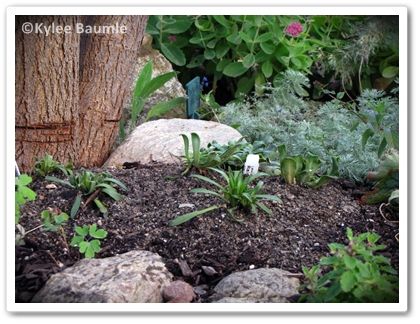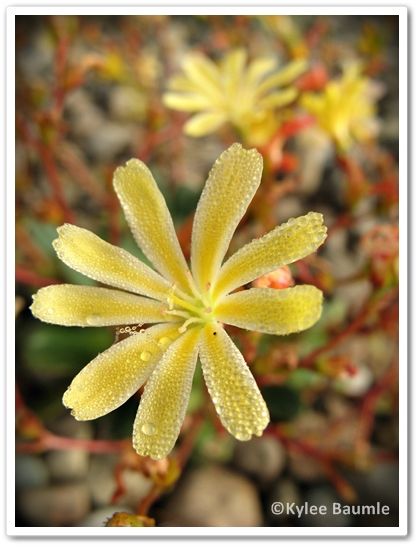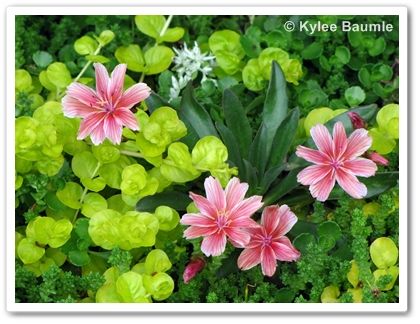There's a sweet little rock garden plant, native to the Pacific Northwest, that caught my fancy several years ago. I first saw Lewisia (Common names: Cliff Maids, Bitterroot) on the Spring Hill website and I knew I had to have it. 'Little Plum' came to live in my garden, but it didn't live very long.
This was early in my gardening days, before I learned about growing zones. It was before I learned about clay soil vs. sandy soil. Before I learned about good drainage. It only takes a few garden losses before you are motivated to do some research to try and figure out why a plant didn't thrive in your garden.
 |
| Lewisia in my garden in 2008 |
Lewisia is a succulent type of plant for zones 4-8 (mostly, depending on species) that likes average to poor soil and excellent drainage. The crown of the plant is subject to rotting, so using a pebble or sand mulch helps keep moisture away. It's a great rock garden plant, which is where I now have mine growing. Yes, I tried again, once I learned what lewisias need to grow well.
 |
| Lewisia in my garden in 2008 |
I got a few new lewisias last week at a plant sale (Lewisia cotyledon 'Rainbow Mix' and Lewisia longipetala 'Little Peach'). I planted them in a mix of sand and compost and elevated the planting area. I used pure sand around the crown of the plants. They'll get sun most of the day, although they prefer some afternoon shade. I think this will be fine in my northern garden.
 |
| Lewisias can also be grown as a houseplant. This one was a winner at the Philadelphia Flower Show this spring. |
The L. cotyledon is only hardy to zone 6, so we'll see how it does in my zone 5b garden. I've successfully grown several zone 6 plants over the years, but Lewisia can be somewhat difficult in the best of circumstances.
 |
| (Yes, we're trying to kill the white mulberry tree...) |
 |
| Lewisia in my 2008 garden. |
Here's a bit of trivia regarding Lewisia: They get their name from Merriwether Lewis (of Lewis & Clark), who collected them during the Lewis & Clark Expedition in the Pacific Northwest during 1804-1806.
 |
| Lewisia blooming in my garden in May 2011. |
















 "Bejeweled"
"Bejeweled"



5 comments:
These are beutiful! I will be looking for these next year. Thanks for introducing me to something new.
How pretty is this!
I like the first picture with the different colours.
Greetings,
Filip
I have had my eye on that flower all summer but have not heard how it did here in Ohio. Now that I see that they have grown for you I am going to have to try them. I love the Rainbow colors. Thanks for the tips about the sandy soil Kylee. I now know just the spot for some in the garden.
The colors in your first photo are amazing! I'm pleased to read that there is a learning curve w/these, as I've ordered, planted...and summarily killed these gorgeous plants myself! ;-)
I've recently begun a succulent garden and may experiment to see if a new lewisia would fare nicely there.
Thanks for the great article!
Post a Comment